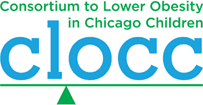Physical Activity and the Built Environment
 Physical activity is an important contributor to preventing childhood obesity in the United States. However, children across the nation are not achieving recommended daily physical activity levels. Barriers to walking and biking and other forms of physical activity are more present in Chicago communities with higher rates of childhood obesity.
Physical activity is an important contributor to preventing childhood obesity in the United States. However, children across the nation are not achieving recommended daily physical activity levels. Barriers to walking and biking and other forms of physical activity are more present in Chicago communities with higher rates of childhood obesity.
Communities, transportation officials, planners, health professionals, and governments should make promotion of physical activity a priority by increasing access to places and opportunities for such activity.
We have partnered with a number of community-based organizations and city agencies to help create and support programs and initiatives that promote safety and increase physical activity throughout the city. Such initiatives include Open Streets, Play Streets, and B-Ball on the Block, which convert streets into temporary physical activity destinations for community residents where park space is limited. Community groups across Chicago have used CLOCC’s Neighborhood Walkability Assessment Tool to identify and address barriers to walking and biking. As a result of conducting walkability assessments, groups are well positioned to strategize and take action to make built environment changes to their neighborhood streets.
For more information about Physical Activity and the Built Environment, please refer to the Blueprint.
References
- U.S. Department of Health and Human Services. 2008 Physical Activity Guidelines for Americans. 2008. http://www.health.gov/PAguidelines/pdf/paguide.pdf.
- Centers for Disease Control. Youth Risk Behavior Surveillance—United States, 2011. Morbidity and Mortality Weekly Report, 2012. 61(SS-4).

